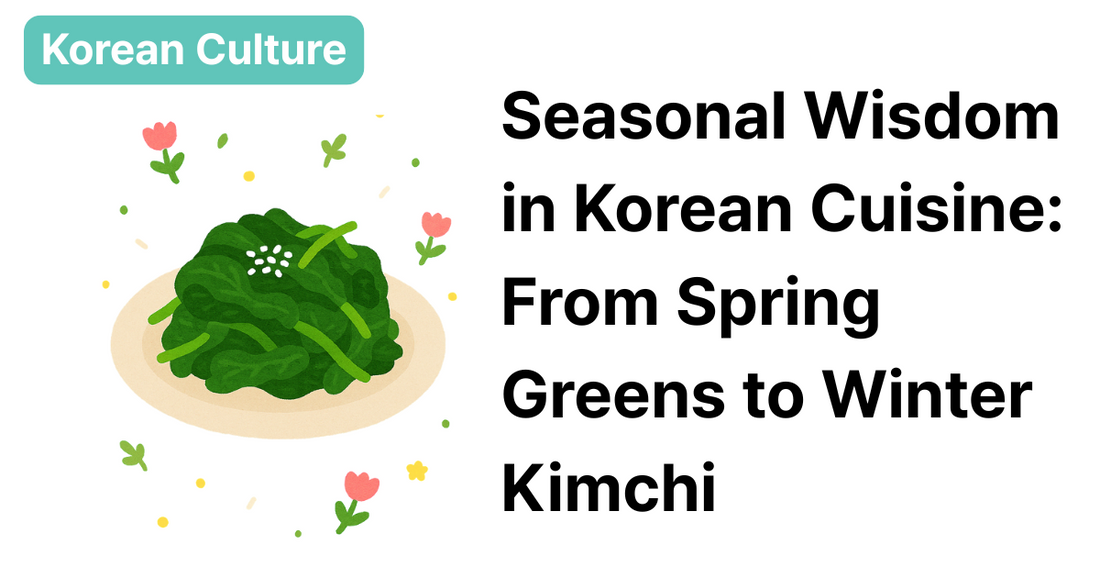
Seasonal Wisdom in Korean Cuisine: From Spring Greens to Winter Kimchi
Share
In Korea, food isn’t just about taste—it’s about timing.
Korean cuisine flows with the seasons, offering ingredients and dishes that match the weather, body, and mood of each time of year.
Let’s explore how Koreans eat with nature, and why seasonal food is still such an important part of the culture today.
Eating with the Seasons: A Deep-Rooted Habit
Long before refrigeration and food imports, Korean families relied on local, seasonal ingredients.
Spring meant fresh greens after a long winter.
Summer called for cooling foods.
Autumn was harvest time.
And winter? It was all about preservation—like kimchi and jang (fermented sauces).
This tradition isn’t just practical—it’s philosophical.
In Korean culture, food and nature are deeply connected. Eating with the seasons is believed to support your health, balance your body, and honor the rhythm of life.
Key Ingredients by Season
🍃 Spring
- 봄나물 (bom-na-mul): wild greens like naengi (shepherd’s purse), dandelion, and mugwort
- Light, detoxifying dishes to refresh the body after winter
🔥 Summer
- 콩국수 (kong-guk-su): cold soybean noodle soup
- 오이냉국 (oi-naeng-guk): cucumber cold soup
- Hydrating, cooling, and low-fat meals for the hot weather
🍁 Autumn
- 송편 (songpyeon): half-moon rice cakes for Chuseok
- Abundant fruits, mushrooms, chestnuts, and grains
❄️ Winter
- 김장김치 (gim-jang kimchi): large-scale kimchi making for the season
- Warm, hearty stews like 된장찌개 (doen-jang-jjigae) and 갈비탕 (gal-bi-tang)
💡 Koreans believe that seasonal ingredients have the energy your body needs most at that time—whether to warm, cool, cleanse, or strengthen.
Health and Harmony in Every Bite
Korean food is often described as balanced—and that balance begins with the seasons.
- Meals combine colors, textures, and temperatures
- Ingredients are chosen to match your body’s condition and the climate
- Fermented foods, herbs, and seasonal vegetables help maintain inner harmony
This is why Korean cuisine is often seen as a form of medicine—healing from the inside out.
💬 A common saying goes: 약식동원 (yak-sik-dong-won) – “Food and medicine come from the same source.”
Nature Is Korea’s Best Recipe Book
Korean meals change with the seasons not just because of tradition—but because nature knows best.
Next time you enjoy a Korean dish, think about what time of year it was meant for—
and how it might be helping your body and soul stay in sync.
📩 Subscribe to our newsletter
Learn more about Korean food culture, everyday expressions, and seasonal recipes delivered to your inbox every week!
